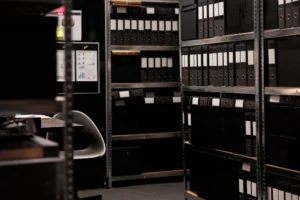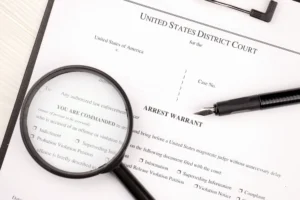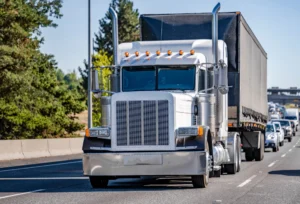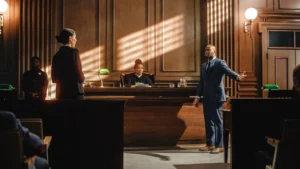When multiple vehicles are involved in a crash, untangling who is liable becomes a complicated and frustrating process — and getting compensation can be even harder. Whether you were rear-ended at a red light or caught in the middle of a highway chain reaction, you may find yourself asking: Who is responsible for all this damage? In Texas, the answer hinges on the state’s at-fault system, and liability often depends on each driver’s individual actions leading up to the collision.
At Guzman Law Firm, we help Texans navigate these challenging cases. If you’ve sustained a personal injury in Texas or suffered property damage in a multi-vehicle accident, don’t risk being unfairly blamed or undercompensated. Our experienced legal team can help protect your rights, challenge questionable findings of fault, and pursue the compensation you deserve.
Call us today at (956) 516-7198 for a consultation.
Is Texas a no-fault state for car accidents?
No. Texas is not a no-fault state. Texas follows a fault-based system when it comes to car accidents, meaning the person who caused the accident is responsible for the resulting damages. Drivers in Texas are required to carry liability insurance to cover injuries and damages they cause to others in a crash.
This at-fault system is very different from systems in no-fault states, where each driver typically turns to their own insurance for compensation regardless of who caused the accident. In Texas, fault must be established before claims can be settled, especially in multi-car collisions where more than one driver may share blame.
More specifically, Texas uses what is called a modified comparative fault system. Under Texas’s modified comparative fault rule, if you are found to be more than 50% at fault for an accident, you cannot recover damages. And even if you’re less than 50% at fault, your compensation is reduced by your percentage of fault. This is why having a lawyer fight for an accurate determination of liability is essential.
Who determines the fault in an accident in Texas?
Determining fault is not always straightforward, especially when three, four, or five vehicles are involved. In most Texas car accidents, fault is determined by law enforcement and/or insurance adjusters:
How do police determine who is at fault in a traffic accident?
When law enforcement arrives on the scene, officers will document the crash by:
- Interviewing drivers and witnesses
- Taking photographs of the vehicles and the road
- Noting skid marks, vehicle damage, and road conditions
- Assessing violations (like speeding or following too closely)
The officer will typically file a Texas Peace Officer’s Crash Report, which may include an opinion on which driver(s) contributed to the accident. While this report can be persuasive, it is not legally binding — insurance adjusters and courts can make their own determinations.
How do adjusters determine who is at fault in Texas?
Insurance adjusters conduct their own investigation, which may include:
- Reviewing the police report
- Examining damage and photos from the scene
- Speaking with insured parties and witnesses
- Analyzing statements and prior driving history
The adjuster will then make a liability determination and may offer a settlement based on that assessment. However, these findings often favor the insurer’s bottom line. If you disagree with their conclusion, you don’t have to accept it; a Laredo car accident attorney can challenge the results and fight for a fairer outcome.
Examples of multi-vehicle accidents
Scenario 1: Who is at fault in a 5-car pileup?
Let’s say you’re driving on I-10 during rush hour. Traffic comes to a sudden stop. A driver in Car 1 brakes hard and stops. Car 2 stops behind them. Car 3 slows down and barely taps Car 2. Then, Car 4 slams into Car 3, pushing it forcefully into Car 2, which is pushed into Car 1. Car 5 hits Car 4 from behind.
That was a lot! Here’s how fault might be divided:
- Car 1 and Car 2: Likely not at fault — they stopped safely.
- Car 3: May bear minor fault for the initial tap but didn’t cause the pileup.
- Car 4: Likely the primary cause, as it impacted Car 3 with force, creating a domino effect.
- Car 5: May also bear fault for following too closely.
This example illustrates how multiple drivers can share liability, and why it’s important to identify the sequence of impacts. Eyewitness accounts, dashcam footage, and expert reconstructions are often needed in these types of cases.
Scenario 2: Who is at fault in a three-car intersection crash?
Picture this: Driver A is turning left at a green light without a protected arrow. Driver B is speeding through the intersection in the opposite direction. Driver C is rear-ended by Driver B and pushed into Driver A’s path. All three cars are damaged.
Possible fault allocation:
- Driver A: May bear partial fault for turning without ensuring it was safe.
- Driver B: Likely at fault for speeding and rear-ending Driver C.
- Driver C: Probably not at fault; was hit from behind and pushed forward.
Even though Driver A made a risky turn, Driver B’s excessive speed and failure to maintain distance contributed more directly to the crash. Without legal guidance, Driver A or C might wrongly be assigned greater fault than they deserve.
Scenario 3: Who is at fault when one driver swerves to avoid a hazard?
Driver A is traveling in the left lane of a two-lane road. A large box falls off a truck in front of them. To avoid the obstacle, Driver A swerves right and sideswipes Driver B, who is driving in the adjacent lane. Driver C is behind and hits Driver A in the rear after the sudden lane change.
Likely liability breakdown:
- Driver A: May bear some fault for failing to check the blind spot or making an unsafe lane change.
- Driver B: Likely not at fault; was simply in their lane.
- Driver C: May bear partial fault for following too closely or failing to react in time.
- The truck driver (if identifiable): May bear significant fault for failing to secure the load that caused the dangerous condition.
This type of scenario highlights the ripple effects that one hazardous action — like an unsecured load — can have. It also demonstrates how important it is to identify all potentially liable parties, including commercial operators.
Why complex accidents require experienced legal help
When more than two vehicles are involved in an accident, blame gets spread around quickly, and not always fairly. Insurance companies may try to shift as much responsibility onto you as possible to reduce or deny payment. Without legal help, you could be:
- Assigned an inaccurate percentage of fault, reducing or eliminating your compensation
- Bullied into accepting a lowball settlement
- Overwhelmed by medical bills, car repairs, and paperwork
An experienced attorney from Guzman Law Firm can help you:
- Reconstruct the accident using expert analysis and witness testimony
- Challenge unfair police or insurance determinations
- Negotiate with multiple insurance carriers on your behalf
- Pursue full compensation for your injuries, lost income, and pain and suffering
In many cases, people don’t realize they can be compensated for long-term complications like whiplash, PTSD, or reduced earning capacity. You deserve a legal team that will fully account for all your damages, not just the immediate ones.
Involved in a multi-vehicle accident? Let Guzman handle your case.
If you’ve been injured or wrongly blamed in a multi-vehicle accident, don’t try to navigate Texas’s complex fault laws on your own. You need someone who understands how to build a strong liability case, protect your interests, and push back against insurance tactics designed to shortchange you.
At Guzman Law Firm, we’ve helped countless Texans sort out the confusion of multi-vehicle collisions and walk away with the compensation they deserve. We know the roads, the laws, and the strategies insurance companies use, and we’re not afraid to fight back.
Don’t let someone else’s mistake become your financial burden. Contact Guzman Law Firm today for a consultation, and let us take the wheel on your claim.
More Helpful Articles by Guzman Law Firm:
- What Is the Punishment for Firearm Trafficking in Texas?
- DWI Checkpoints in San Antonio: Are They Legal?
- First Time Gun Charges in Texas: What to Expect
- What Happens if Your CDL Is Suspended for a DWI in Texas?
- The Difference Between State and Federal Drug Charges in Texas





